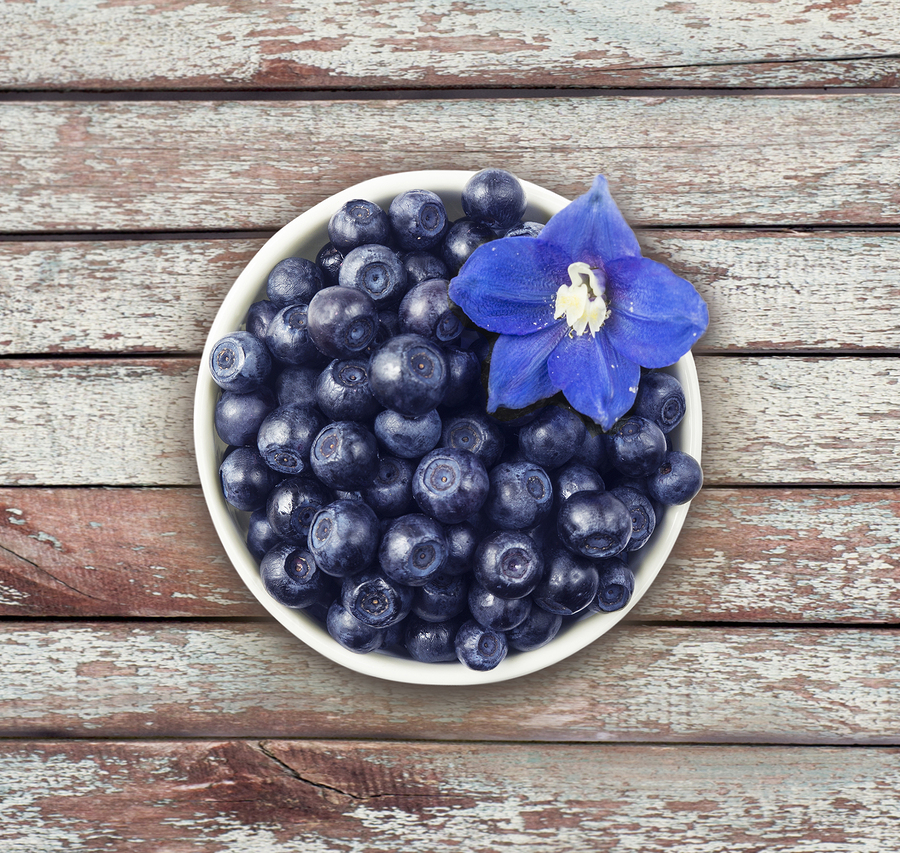Bilberry and Blueberry: They’re both blue. They’re both tasty. And they’re both good for you. But compared to their sibling berry (the blueberry), wild-grown European bilberries (Vaccinium myrtillus) are more intensely sweet and have much more delicate skins.
Since the early Middle Ages, dried and fresh bilberry leaves and fruit have been used for managing diabetic concerns, gastrointestinal complaints, and urinary system infections. Extracts of bilberry are used to address age-related degeneration in the circulatory systems and diseases where inflammation is a strong underlying factor, such as heart disease and retinopathy. There’s also evidence that bilberry may help alleviate eye fatigue caused by extensive computer and video monitor use.
Bilberry fruit contains potent antioxidant and anti-inflammatory properties. Particular attention is on the fruit’s anthocyanoside (aka anthocyanidins). These plant pigments act as powerful antioxidants and may help protect the body from the damaging effects of inflammation and oxidative stress.
Bilberries are a deep indigo, almost black in color. They have found their way into every imaginable culinary delight: jams, pies, sorbets, liqueurs, and wines. Adding bilberry to your daily diet is a delicious way to enjoy its health protective benefits: Incorporate a cup per day of fresh bilberries by topping off yogurt, oatmeal, or salad with fresh bilberry. For a delicious tea, simmer 1 Tb. dried berries in 2 c. of water for 20 minutes; strain and drink.
For specific health concerns, extracts of bilberry are available in capsule and tincture, both of which should be standardized to contain a specific percent of anthocyanins. Check with your health practitioner for the appropriate extract for your medical needs.
References
- Johnson, R.L., S. Foster, Low Dog, T. and Kiefer, D. National Geographic Guide to Medicinal Herbs: The World’s Most Effective Healing Plants.(2012) p. 103-105. Washington, D.C.: National Geographic.
- Chu W, Cheung SCM, Lau RAW, et al. Bilberry (Vaccinium myrtillus L.) In: Benzie IFF, Wachtel-Galor S, editors. Herbal Medicine: Biomolecular and Clinical Aspects. 2nd edition.(2011). Chapter 4. Boca Raton (FL): CRC Press/Taylor & Francis. Accessed 10 Aug 2017 from: https://www.ncbi.nlm.nih.gov/books/NBK92770/
- Canter PH, Ernst E. “Anthocyanosides of Vaccinium myrtillus (bilberry) for night vision–a systematic review of placebo-controlled trials.” Surv Ophthalmol.(2004) Jan-Feb 49(1):38-50.
- Ozawa Y, Kawashima M, Inoue S, et al. Bilberry extract supplementation for preventing eye fatigue in video display terminal workers. J Nutr Health Aging.(2015) May 19(5):548-54.
- National Institutes of Health. “Bilberry: MedlinePlus Supplements.” December 2010.
- Basu, Arpita, Michael Rhone, and Timothy J Lyons. “Berries: Emerging Impact on Cardiovascular Health.” Nutrition reviews 68.3 (2010): 168–177. PMC. Web. 10 Aug. 2017.

